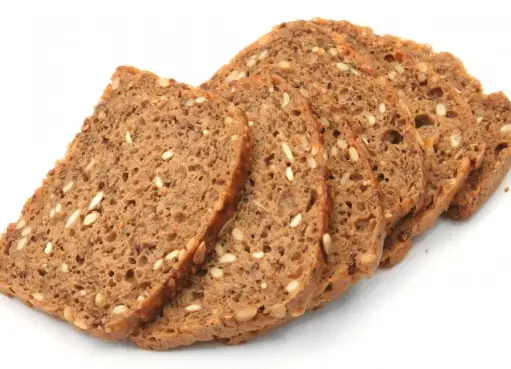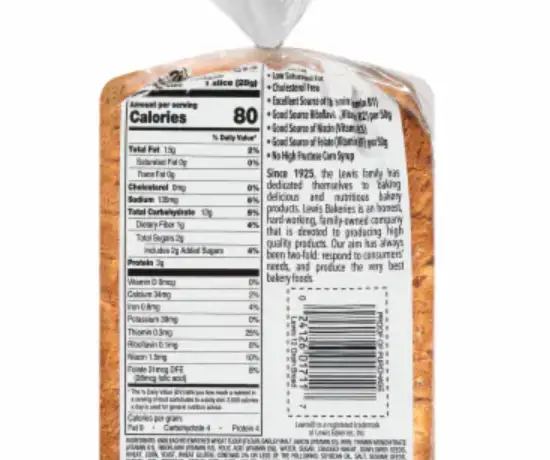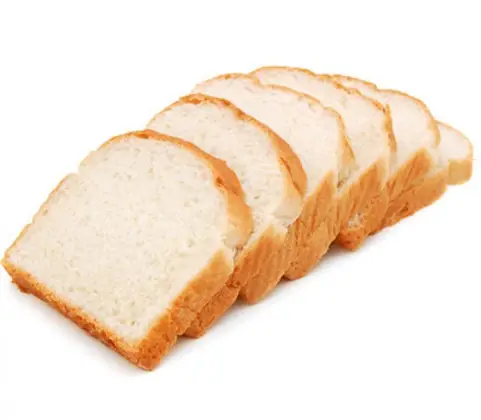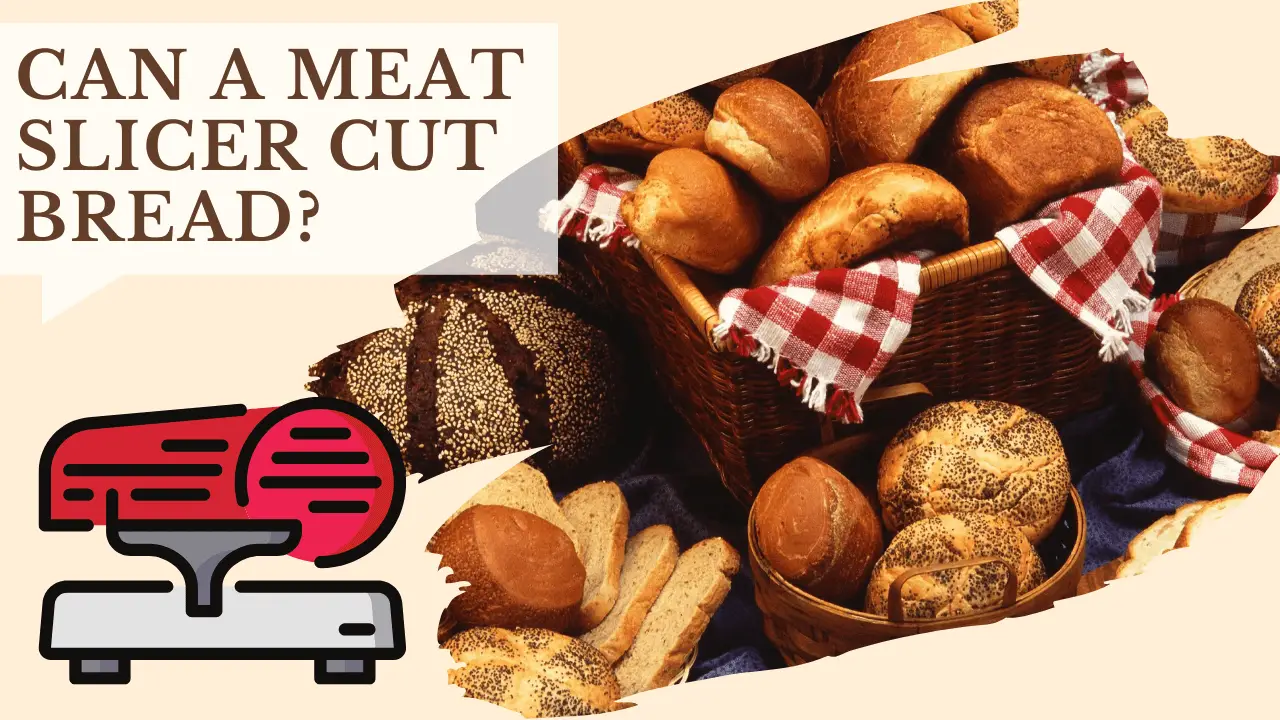The nutritional value of 12-grain bread is generally higher compared to white thick-slice bread. 12-grain bread contains more fiber, protein, and essential vitamins and minerals. It supports gut health, helps manage blood sugar, promotes heart health, and aids in preventing birth defects. However, white thick slice bread can still be enjoyed in moderation and provides quick energy and certain nutrients. Storage tips include freezing or refrigerating bread to maintain freshness.
While both serve as staple foods, they have distinct differences in terms of nutrition and health benefits. Let’s explore the characteristics of each bread type, their nutritional profiles, and the potential advantages they offer. By understanding these factors, you can make an informed decision about which bread is the better choice for you.
12 Grain Bread: A Wholesome Delight
What is 12 Grain Bread?

12-grain bread is a type of bread that incorporates a variety of grains and seeds into its recipe, offering a blend of flavors and textures. It is often praised for its nutritional content, making it a popular choice among health-conscious individuals.
Nutritional Value of 12 Grain Bread: A Wholesome Delight

When it comes to maintaining a balanced diet, understanding the nutritional value of the foods we consume is essential. 12-grain bread is a wholesome option that offers a range of nutrients to support overall health and well-being. Let’s delve into the detailed information regarding the nutritional composition of 12-grain bread:
Calories: A single slice of 12-grain bread contains approximately 120 calories. This calorie content is moderate and provides a reasonable amount of energy for your daily activities.
Fat: Each slice of 12-grain bread contains about 3 grams of fat. The fats present in this bread are primarily sourced from healthy sources such as sunflower seeds and flaxseeds. These fats are considered beneficial for heart health and provide essential fatty acids.
Carbohydrates: With 19 grams of carbohydrates per slice, 12-grain bread provides a moderate amount of energy. Carbohydrates are the main source of fuel for our bodies, and this bread can contribute to meeting your daily carbohydrate needs.
Fiber: One of the significant advantages of 12-grain bread is its fiber content. Offering 3.01 grams of fiber per slice, this bread supports healthy digestion and helps you feel full for longer. Fiber also plays a crucial role in maintaining a healthy gut and promoting regular bowel movements.
Protein: Protein is an essential nutrient required for various functions in the body, including tissue repair and muscle maintenance. A slice of 12-grain bread contains 5 grams of protein, contributing to your daily protein intake. This can be particularly beneficial for individuals following a vegetarian or plant-based diet.
Vitamins and Minerals: 12-grain bread provides a range of essential vitamins and minerals, adding to its nutritional value. Some notable nutrients found in this bread include:
- Calcium: This mineral is crucial for maintaining healthy bones and teeth. 12-grain bread contributes approximately 40 grams of calcium per slice, supporting bone health.
- Iron: Iron is essential for energy production and proper blood flow. A slice of 12-grain bread provides approximately 1 milligram of iron, which accounts for around 6% of your recommended daily value.
- Niacin: Also known as vitamin B3, niacin helps to regulate cholesterol levels. 12-grain bread contains approximately 1.6 grams of niacin, which can contribute to lowering LDL cholesterol levels and raising HDL cholesterol levels.
Health Benefits of 12-Grain Bread: A Wholesome Choice
Choosing 12-grain bread as part of your diet can offer a range of health benefits. From promoting a healthy digestive system to reducing the risk of heart disease, here is a detailed breakdown of the advantages that 12-grain bread provides:
Gut Health Support: One of the notable benefits of 12-grain bread is its fiber content, which promotes a healthy digestive system. The fiber acts as a prebiotic, providing nourishment for beneficial gut bacteria. This helps maintain a balanced gut microbiome and supports overall gut health.
Satiety Enhancement: Whole grains, such as those found in 12-grain bread, have a high fiber content that contributes to a greater feeling of fullness. By keeping you satisfied for longer periods, whole grains reduce the urge to snack between meals. This can be particularly beneficial for those trying to manage their weight or avoid excessive calorie intake.
Blood Sugar Management: Studies have suggested that consuming whole-grain bread, like 12-grain bread, can help minimize blood sugar spikes. The high fiber content and slower digestion rate of whole grains contribute to more stable blood sugar levels. This is especially important for individuals with diabetes or those seeking to prevent blood sugar fluctuations.
Heart Health Promotion: Incorporating whole grains into your diet, including whole-grain bread like 12-grain bread, has been associated with a reduced risk of heart disease. Whole grains contain antioxidants, fiber, and various beneficial compounds that support heart health. They can help lower LDL (bad) cholesterol levels, reduce blood pressure, and decrease the risk of cardiovascular events.
Birth Defect Prevention: Fortified with folic acid, 12-grain bread plays a crucial role in preventing neural tube defects, which are serious birth defects of the brain and spine. Folic acid, a B vitamin, is especially important during pregnancy, and 12-grain bread can provide a dietary source of this essential nutrient. It is recommended for pregnant individuals consume adequate amounts of folic acid to support healthy fetal development.
Storage and Food Safety Tips for 12-Grain Bread:
Keeping it Fresh
Proper storage is key to maintaining the freshness and quality of your 12-grain bread. Here are detailed tips to ensure your bread stays delicious:
Freeze for Freshness: To prolong the shelf life of 12-grain bread, consider storing it in the freezer. Freezing helps maintain its freshness and prevents mold growth. Here’s how to freeze your bread effectively:
- Wrap the bread: Before freezing, ensure your bread is wrapped tightly to prevent freezer burn. You can use plastic wrap, aluminum foil, or a freezer-safe bag.
- Portion it out: If you won’t consume the entire loaf at once, slice the bread and freeze individual portions. This way, you can thaw only what you need, preventing waste.
- Store in airtight containers: Place the wrapped or sliced bread in an airtight container or freezer bag to protect it from moisture and freezer odors.
- Label and date: To keep track of the storage time, label the package with the date you froze the bread.
Remember, extended freezing may impact the flavor and texture of the bread. It’s best to consume it within a reasonable time frame to enjoy its optimal taste.
Check Quality: Ensuring your bread is stored properly is essential for retaining its rich, whole wheat flavor. Here’s what you can do:
- Store in a cool, dry place: Keep your 12-grain bread in a cool, dry area away from direct sunlight and heat sources. Avoid storing it near appliances that generate heat, as it can expedite staling.
- Use a bread box or airtight container: If you prefer storing your bread at room temperature, consider using a bread box or an airtight container. These help maintain the bread’s freshness by protecting it from air and moisture.
- Seal the bag: If your bread comes in a resealable bag, make sure to seal it tightly after each use. This helps retain moisture and keeps the bread from becoming stale.
- Avoid refrigeration: Refrigeration can cause bread to become stale more quickly. It is generally not recommended to store 12-grain bread in the refrigerator unless necessary due to hot and humid conditions.
White Thick Slice Bread: A Classic Favorite
What is White Thick Slice Bread?

White thick-slice bread, a classic favorite in many households, offers a softer texture and lighter taste compared to whole-grain bread varieties. While it may not contain the same nutritional value as whole-grain bread, it can still provide certain benefits.
Nutritional Value of White Thick Slice Bread: A Classic Staple
White thick-slice bread is a popular choice known for its softer texture and lighter taste. While it may not offer the same nutritional value as whole-grain bread, it still provides certain nutrients. Let’s delve into the detailed information regarding the nutritional composition of white thick slice bread:
Calories: One slice of white bread typically contains around 90 calories. This calorie content makes it a moderate option in terms of energy intake.
Fat: White bread contains approximately 1.5 to 2.0 grams of fat per slice, depending on the brand and variety. The fat content in white bread is relatively low and contributes to its overall calorie content.
Carbohydrates: A single slice of white thick slice bread contributes approximately 17 grams of carbohydrates. As with most bread, the primary macronutrient in white bread is carbohydrates. These carbohydrates provide the body with a source of energy.
Protein: While white bread is not a significant source of protein, it can still provide approximately 3 grams of protein per slice. Protein plays a crucial role in building and repairing body tissues, supporting various bodily functions.
Vitamins and Minerals: White thick-slice bread is often fortified with vitamins and minerals to enhance its nutritional value. Some common fortifications include:
- Calcium: White bread is typically fortified with calcium. Calcium is essential for maintaining healthy bones and teeth.
- Iron: Iron is another mineral often added to white bread. It supports energy production and helps maintain healthy blood cells.
- B Vitamins: White bread is fortified with B vitamins like thiamine (vitamin B1) and niacin (vitamin B3). These vitamins play essential roles in energy metabolism and the proper functioning of the nervous system.
Health Benefits of White Thick Slice Bread: A Quick Energy Source
White thick-slice bread, despite its lighter nutritional profile, can still offer certain health benefits. Let’s explore the detailed information regarding the advantages it provides:
Quick Energy Source: The carbohydrates present in white bread serve as a quick and efficient energy source for your body. They provide the fuel needed to carry out daily activities and support bodily functions.
Support for Healthy Cell Division: Fortified white bread contains folate (vitamin B9), which plays a vital role in maintaining healthy cell division. Folate is particularly important for pregnant individuals as it supports proper fetal development.
Potential Mood Booster: White bread fortified with folic acid, a synthetic form of folate, may contribute to a potential mood boost. Folic acid has been linked to helping fend off depression, though further research is needed to fully understand the extent of its impact.
Metabolism Support: White bread contains thiamine (vitamin B1), which aids in converting food into energy. This can benefit individuals with diabetes or certain medical conditions that may require additional support for energy metabolism.
While white thick-slice bread may not offer the same range of health benefits as whole-grain bread, it can still serve as a convenient and quick source of energy. The fortified vitamins and minerals, such as folate and thiamine, provide additional support for overall well-being.
Storage and Food Safety Tips for White Thick Slice Bread:
Keeping it Fresh
Proper storage is essential for maintaining the freshness and quality of your white thick slice bread. Here are detailed tips to ensure your bread stays optimal:
Optimal Freshness: For the best freshness and quality, it is recommended to consume white bread within 2-3 weeks of purchase. This timeframe ensures you enjoy the bread at its peak flavor and texture.
Refrigeration and Freezing: To extend the shelf life of white bread, you can choose to refrigerate or freeze it. Both methods can help preserve freshness and prevent mold growth. Here’s what you need to know:
- Refrigeration: If you live in a hot and humid climate, refrigerating white bread can help maintain its freshness. However, note that refrigeration may lead to faster staling, so it’s best to consume refrigerated bread within a reasonable time frame.
- Freezing: Freezing white bread is an effective method to extend its shelf life. To freeze, tightly wrap the bread in plastic wrap or place it in a freezer-safe bag. It’s recommended to slice the bread before freezing for easier portioning. Remember to label and date the package. Thaw frozen bread slices as needed, either at room temperature or in a toaster.
FAQs:
Is 12-grain bread always whole grain?
Not necessarily. To ensure it is made from 100% whole-grain flour, check the ingredient list. Look for “100% whole wheat” as the first ingredient to guarantee a whole grain bread.
Which bread is better for weight management?
12-grain bread, with its higher fiber content, is generally a better choice for weight management as it provides more satiety and supports healthy digestion.
Can white bread be part of a healthy diet?
While whole-grain bread is typically considered the healthier option, white bread can still be included in a balanced diet in moderation, providing quick energy and certain essential nutrients.

How should I store bread to maintain its freshness?
For both 12-grain bread and white thick-slice bread, freezing is the best option to prolong freshness. Refrigeration is also suitable, but be mindful of the quality if stored for an extended period.
Conclusion:
When comparing 12-grain bread and white thick-slice bread, it is evident that 12-grain bread offers a higher nutritional value and a range of health benefits. Packed with fiber, protein, vitamins, and minerals, 12-grain bread supports gut health, aids in managing blood sugar levels promotes heart health, and contributes to preventing birth defects. On the other hand, white thick slice bread serves as a quick energy source and contains essential nutrients, albeit in lesser quantities. Both bread types can be enjoyed in moderation as part of a balanced diet. By understanding their differences, you can make an informed choice based on your nutritional needs and preferences. Remember to store your bread properly to maintain its freshness and quality. Whether you opt for the wholesomeness of 12-grain bread or the softer texture of white thick-slice bread, both can be enjoyed as part of a delicious and nutritious diet.
Key Takeaways:
- 12-grain bread is generally more nutritious than white thick-slice bread due to its higher fiber and whole-grain content.
- 12-grain bread supports gut health, helps manage blood sugar, promotes heart health, and aids in preventing birth defects.
- White thick-slice bread offers quick energy, supports cell division, and may help maintain a healthy metabolism.
- Store bread in the freezer or refrigerator to maintain freshness, with freezing being the best option for extended storage.
Pros And Cons, Similarities And Differences:
| Aspect | 12 Grain Bread | White Thick Slice Bread |
|---|---|---|
| Pros | – Higher in fiber, aiding digestion and satiety | – Quick source of energy for daily activities |
| – Supports gut health | – Contains fortified vitamins and minerals | |
| – Potential to lower blood sugar spikes | – Supports healthy cell division with folate | |
| – Promotes heart health | – Potential mood booster with folic acid | |
| – Helps prevent birth defects with fortified folic acid | – Supports metabolism with thiamine | |
| Cons | – Not always 100% whole grain | – Lower in fiber compared to whole grain options |
| – May have higher calorie content | – Limited nutrient content compared to whole grain | |
| Similarities | – Can be enjoyed as part of a balanced diet | – Both can be stored in the freezer for freshness |
| – Provide carbohydrates for energy | – Can be stored in the refrigerator for extended life | |
| – Offer convenience and versatility | – Can be toasted or used for sandwiches and toast | |
| Differences | – Higher fiber content | – Lighter taste and softer texture |
| – More nutrients and minerals | – Often fortified with vitamins and minerals | |
| – Supports gut health and heart health | – Quick energy source with potential mood benefits | |
| – Potential to prevent birth defects | – Supports metabolism and healthy cell division |
References And Citations:
Here are some suggested external links related to the topic, along with the corresponding anchor text:
- The Benefits of Whole Grains https://www.hsph.harvard.edu/nutritionsource/what-should-you-eat/whole-grains/– The Benefits of Whole Grains
- Understanding Fiber and Its Role in Digestion – Understanding Fiber and Its Role in Digestion
- The Importance of Fortified Foods https://www.ncbi.nlm.nih.gov/pmc/articles/PMC8066912/ – The Importance of Fortified Foods
- Maintaining a Healthy Heart: Tips and Strategies https://www.heartfoundation.org.au/bundles/healthy-living-and-eating/keeping-your-heart-healthy – Maintaining a Healthy Heart: Tips and Strategies
- Folate: The B Vitamin for Healthy Cell Divisionhttps://www.hsph.harvard.edu/nutritionsource/folic-acid/ – Folate: The B Vitamin for Healthy Cell Division.

John Hebdon is a food enthusiast, passionate chef, and author of various articles and blog posts related to food and cooking. With a deep love for all things culinary, John’s blog serves as a platform to share his extensive kitchen experiences with a broader audience.
In addition to his culinary expertise, John has a flair for writing and a natural ability to share his passion for food with others. His articles and blog posts are informative, engaging, and packed with practical tips for readers of all skill levels.
As a food enthusiast and writer, John is always on the lookout for new and exciting culinary experiences. Whether it’s trying out a new restaurant, experimenting with a new recipe, or simply sharing a favorite dish with friends and family, John is always eager to explore and share the world of food with others.







